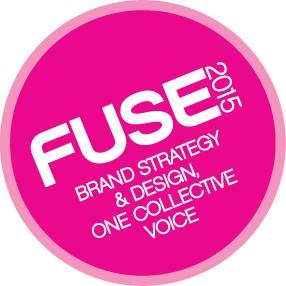 What if you could hop off a seven hour flight from New York to London feeling refreshed and entirely jet lag-free? That’s the question British Airways has been trying to answer for years. From enhanced entertainment and meal offerings to carefully-designed lighting and noise reduction measures, many of the recent updates to British Airways’ fleet have been centered on creating the perfect customer experience in a notoriously tricky industry.Their latest innovation is “The Happiness Blanket.” The blanket is embedded with LEDs and connected via Bluetooth to a headband containing sensors that read electrical fluctuations in the wearer’s neurons. According to the promotional video released by the airline, if brain activity indicates that the wearer is calm and relaxed, the surface of the blanket turns blue. If the wearer is stressed or anxious, the blanket turns red.
What if you could hop off a seven hour flight from New York to London feeling refreshed and entirely jet lag-free? That’s the question British Airways has been trying to answer for years. From enhanced entertainment and meal offerings to carefully-designed lighting and noise reduction measures, many of the recent updates to British Airways’ fleet have been centered on creating the perfect customer experience in a notoriously tricky industry.Their latest innovation is “The Happiness Blanket.” The blanket is embedded with LEDs and connected via Bluetooth to a headband containing sensors that read electrical fluctuations in the wearer’s neurons. According to the promotional video released by the airline, if brain activity indicates that the wearer is calm and relaxed, the surface of the blanket turns blue. If the wearer is stressed or anxious, the blanket turns red.
As a researcher, this opportunity for seemingly effortless, real-time data collection piqued my interest immediately. I see a lot of potential in the ability to capture passengers’ emotional responses to various aspects of the flight experience as they actually experience it. If they had access to accurate emotional response information, flight attendants could find ways to tailor services to accommodate the needs of passengers on an individual level, and data collected across countless flights could provide useful information about what the airline is doing right overall and where they need to improve. With a bit of additional demographic and psychographic information on each passenger, the airline could create marketing campaigns and promotions around the specific experiences and emotional reactions of different subgroups.
At CMB, we know just how much emotions matter. We repeatedly find that the emotional impression left on a customer after an interaction with a brand is a major driver of customer satisfaction, likelihood to recommend, and even future purchase intent across all types of industries. British Airways, by focusing on helping passengers step off its planes feeling satisfied, is creating a subconscious connection between its passengers’ positive emotions and its brand. You can bet that the next time I need to book a flight, I would first look to the airline that got me to Europe feeling refreshed and relaxed, rather than the one that left me dehydrated and drowsy.
However, The Happiness Blanket certainly has its drawbacks as a research tool. Based on the information provided about the blanket so far, it seems that there is no way to tell—on a more detailed level—what emotions the passengers are experiencing, which would have serious consequences. The blanket supposedly turns red when the wearer is anxious or stressed and blue when he/she is calm or relaxed, but there are so many more emotions on the spectrum that are not acknowledged by this system. For example, if two people’s blankets show red, one may be because a passenger is feeling unsafe and afraid on the flight, while the other may be because a passenger is enjoying the adrenaline rush of watching an action movie. If you were to ask those two passengers how they felt after their flights, and whether they would choose to fly with the airline again, you would get two drastically different answers. If British Airways intends to use this data to make real, impactful changes to its service, they will need to find a way to capture nuances like this or they could misinterpret the data entirely and make poor business decisions as a result.
This example provides a basic illustration of why we find that self-reporting is the most accurate way to collect data on something as subjective as emotion. While biometric solutions can sometimes provide a basic emotional read, self-reporting provides a more dependable, and much less expensive, way to get at the discrete emotion being experienced. The only way for the flight attendant to tell the difference between two red blankets would be to ask the passengers how they are feeling. Only then could they properly tailor the service to each person’s experience.
When I told my colleagues about The Happiness Blanket, they kept asking the same questions: how long can the novelty of the blanket sustain its use? Couldn’t it be a bit awkward to have your emotions broadcast to the entire cabin, especially in a situation as sensitive for many people as flying? Maybe it would make more sense to get rid of the blanket aspect entirely and just send the data directly to a computer. That way, the flight attendants could still monitor the data for in-flight use, and it could still be captured for future analysis, but passengers wouldn’t be disturbed by the constant color changes on their (or fellow passengers’) blankets. However, getting passengers to agree to have their brainwaves monitored by an airline could prove a challenge, and with the inaccuracies of this method of data collection, it may not even be worth the investment. Although the idea of being able to read passengers’ emotions directly appeals to me as a researcher, self-reporting is still the only way to capture reliable data on the subjective emotions of customers.
So, is The Happiness Blanket just a clever publicity stunt designed to promote recent enhancements to British Airways’ First and Business Class cabins, or is it a sign of true dedication to research and customer feedback? So far, it seems like the company has primarily been using The Happiness Blanket to attract attention, get consumers engaged with the brand, and show why the company thinks its flights are better than its competitors’ flights. If British Airways is truly trying to capture useable information on their passengers’ reactions to its service through The Happiness Blanket. . .they’ll also need to ask them.
Amy is Senior Associate Researcher at CMB and an avid traveler. She is a bit disappointed that she won’t have the chance to try out the Happiness Blanket on her next trip to Europe.
Understanding the emotional payoffs consumers want and expect is critical to helping brands build and maintain a loyal customer base. Watch our recent webinar to hear Dr. Erica Carranza and Brant Cruz share how we capture these emotional payoffs to inform a range of business challenges, including marketing, customer experience, customer loyalty, and product development.





 Last week’s
Last week’s  Avis Budget Group’s VP of Customer Insights and Experience, Eric Smuda, sat down with CMB’s Judy Melanson to talk about Customer Experience, suppliers, and his work as a corporate insights executive.
Avis Budget Group’s VP of Customer Insights and Experience, Eric Smuda, sat down with CMB’s Judy Melanson to talk about Customer Experience, suppliers, and his work as a corporate insights executive. 
 It’s both an exciting and challenging time to be a researcher. Exciting because we can collect data at speeds our predecessors could only dream about and challenging because we must help our partners stay nimble enough to really benefit from this data deluge. So, how do we help our clients reap the rewards of Big Data without drowning in it?
It’s both an exciting and challenging time to be a researcher. Exciting because we can collect data at speeds our predecessors could only dream about and challenging because we must help our partners stay nimble enough to really benefit from this data deluge. So, how do we help our clients reap the rewards of Big Data without drowning in it?